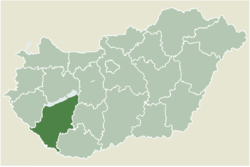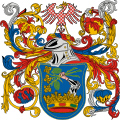Nyim | |
|---|---|
Village | |
 Location of Somogy county in Hungary | |
| Coordinates: 46°48′17″N18°06′17″E / 46.80468°N 18.10477°E | |
| Country | |
| Region | Southern Transdanubia |
| County | Somogy |
| District | Siófok |
| RC Diocese | Kaposvár |
| Area | |
• Total | 9.76 km2 (3.77 sq mi) |
| Population (2017) | |
• Total | 305 [1] |
| Demonym | nyimi |
| Time zone | UTC+1 (CET) |
| • Summer (DST) | UTC+2 (CEST) |
| Postal code | 8612 |
| Area code | (+36) 84 |
| NUTS 3 code | HU232 |
| MP | Mihály Witzmann (Fidesz) |
| Website | Nyim Online |



